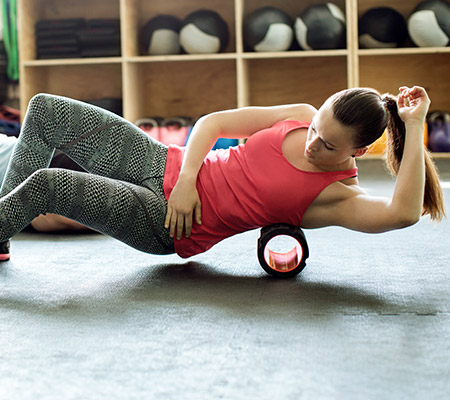
You’ve probably seen people foam rolling at the gym or heard someone talk about the benefits.
Foam rolling is a good way to relieve muscle tension and work out knots in your muscles. It can replicate the effects of a deep tissue massage if you do it the right way.
“Foam rolling is different from stretching,” said Dianne Kilgas, a Marshfield Clinic Health System physical therapist. “The pressure of your muscles on the foam roller helps ease focal areas of tension deeper in the muscles in a way that stretching often does not.”
Rolling is best used in addition to stretching to relieve muscle soreness.
Tips for rolling the right way
Start by choosing a softer foam roller with a flat surface. Dense or textured foam rollers are made to exert more pressure per square inch and can be too intense for someone who has never foam rolled.
“In my experience, smooth foam rollers are less expensive than textured ones and yield similar results,” Kilgas said.
Know the location of the muscle you’re rolling. The most effective way to foam roll is over the entire length of the muscle, so it’s important to know where it ends and begins. Pause for 5-10 seconds on knots as you slowly roll over the muscle. You only need to pass over the whole muscle for 30 seconds to two minutes to release tension. Rolling over the muscle quickly doesn’t provide any added benefit.
“You can roam roll before or after exercise,” Kilgas said. “Rolling is best used in addition to stretching and an active cool-down to relieve muscle soreness after exercising.”
She often recommends foam rolling for the lower extremities. The hamstrings, quadriceps and calves are larger muscles suitable for foam rolling. Avoid rolling over joints and bony areas.
Don’t foam roll if you have a recent muscle injury that hasn’t healed. Stop rolling if it causes pain. Some discomfort is normal, but it shouldn’t feel painful.
Be careful foam rolling your back
Foam rolling your back is a controversial topic. Kilgas said studies have shown rolling your middle and lower back can be beneficial and can be done without any adverse effects. However, it’s not for everyone.
Performing a stretching routine or rolling your back muscles using a tennis ball against a wall is a less intense way to relieve muscle tension. This option may be safer and more tolerable for some people.
Consult your doctor or physical therapist to determine if foam rolling your back is an appropriate treatment for you. Don’t try foam rolling your back without consulting your health care provider if you have a history of persistent back pain.
Related Shine365 posts
Feeling the burn: 4 ways to ease sore muscles






Leave a Reply